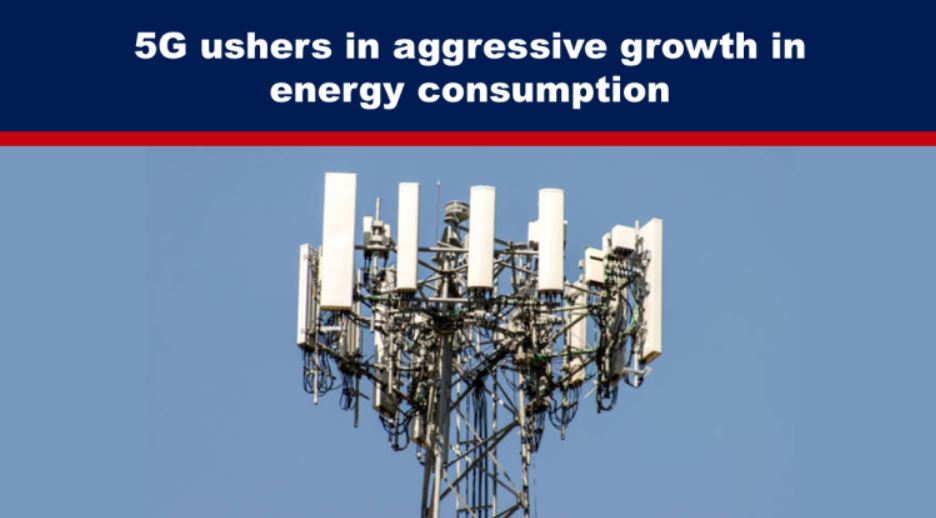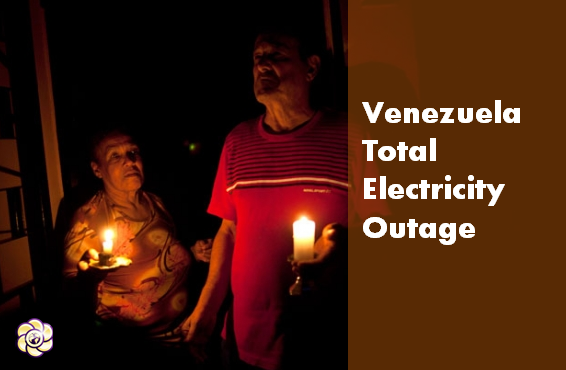“A lurking threat behind the promise of 5G delivering up to 1,000 times as much data as today’s networks is that 5G could also consume up to 1,000 times as much energy,” IEEE Spectrum wrote in 2018.
Why? Because, as Environmental Health Trust noted, there will be an increase in the number of small cells, massive multiple-input multiple-output (“MIMO”) antennas, cloud computing and an explosion of internet-connected devices.
One 5G base station is estimated to consume about as much power as 73 households. Three years ago, it was estimated that by 2025 5G would consume more than 20% of the world’s energy.
Most of us don’t know what makes up a 5G network and terms such as small cells and MIMO antennas are near to meaningless. So, before we explore how much energy is required for a 5G network, we are sharing the video below to help us grasp the basic concepts.
What 5G Means for Energy
The following is extracted from an article published by the deep state milieu Council on Foreign Relations in 2019. The article was written by Chris Bronk, assistant professor of computer and information systems and associate director of the Centre for Information Security Research and Education at the University of Houston.
5G is in the millimetre wave bands – 24-86 GHz. This slice of radio spectrum can carry large amounts of data, but not nearly as far as the current mobile network at frequencies from 700 megahertz to 6 gigahertz. What this means is that for 5G, a lot more equipment needs to be installed and potentially more data needs to be processed.
Additionally, it is important to note that millimetre wave communications are prone to interference. For example, radio at above 20 GHz doesn’t go through walls well. It doesn’t go through leaves well. It doesn’t play nicely with rain. What does this mean? Many, many more antennas.
Measuring networking power consumption requires the capacity to determine how much energy wired and wireless networks consume.
“A general concern is that higher data rates can only be achieved by consuming more energy; if the EE [energy efficiency] is constant, then 100× higher data rate in 5G is associated with a 100× higher energy consumption.” This is where headlines like, “Tsunami of data could consume 1/5 of global data by 2025,” come from.
In addition to transmitting or harvesting data, energy can also be moved in 5G networks. With 5G, one of the novel technologies being considered is Radio Frequency (RF) harvesting; converting energy in transmitted radio waves to user devices or even wireless infrastructure (microcells, antenna arrays, etc.). Since RF signals can carry both energy and information, theoretically RF energy harvesting and information reception can be performed from the same RF input signal. This scheme is referred to as the simultaneous wireless information and power transfer (SWIPT). The hardware to support this doesn’t exist yet, but it has promise.
Our biggest area of concern, however, is in data centres. Radoslav Danilak asserts that data centers will consume exponentially larger amounts of electricity, arguing, “consumption will double every four years.”
How much Power is Required for the 5G Network?
We have previously published articles on the enormous energy Bronk’s “biggest area of concern” requires – data centres. It is the reason why Microsoft and Google are turning to nuclear power, recently labelled as “green” energy, to provide the large amounts of reliable energy data centres need.
Read more:
- Google signs deal for nuclear power to supply the electricity needed for its AI operations
- While we’re supplied unreliable “renewable” energy, reliable “green” nuclear energy will be supplied for data centres and AI
But what about the energy needed to power the 5G network? In the first instance, let’s consider what energy is required to power 5G base stations.
As reported by AGL Media Group in 2020, Roberto Kompany, a senior analyst at Analysys Mason, said that a site’s power supply must deliver enough watts to service the three main components that are necessary for the base station to function adequately: the rectifier, the air conditioner and the back-up battery system.
He said that the existing equipment at most operator sites delivers sufficient power to service 4G and other legacy networks, but not enough to meet the additional power requirements of 5G networks. “The introduction of massive-MIMO antennas alone will require an additional 1,000 watts of power per sector,” Kompany said.
According to a 2019 article published by IEE Spectrum, “A 5G base station is generally expected to consume roughly three times as much power as a 4G base station. And more 5G base stations are needed to cover the same area.”
In a 2018 report, the Small Cell Forum predicted that the number of installed small cells would be 70.2 million in 2025. And the number of 5G or multimode small cells in 2025 will be 13.1 million.
Citing a 2020 study, Data Centre Forum said:
5G will usher in aggressive growth in energy consumption … By 2030, consumption is expected to grow to 51.3 Mtoe [million tonnes oil equivalent] – a number equivalent to all the energy to be consumed throughout Sweden, or roughly the same amount of energy to be consumed by all the households in the United Kingdom that year.
As 5G usurps LTE [long-term evolution], energy consumption is expected to increase 160% between 2020 to 2030 due to the energy demands of powerful network elements like massive MIMO and edge servers, the proliferation of 5G cell sites and the flexibility of the 5G networks in both consumer and enterprise use cases.
Power consumption of the 5G network is expected to soar due to active network elements like energy-hungry baseband units, remote radio heads, small cells and core networks.
5G will prompt Energy Consumption to Grow by staggering 160% in 10 years, Data Centre Forum, updated 12 October 2021
In 2021, JRS Eco Wireless also explored how much energy 5G will consume. Recognising that some companies are attempting to make their devices more energy efficient, JRS said, “While there may be improvements in energy efficiency for new devices, these gains are completely lost in the increase in demand for bandwidth … Consider the huge expected growth in games, videos, streaming services, virtual reality (VR) and the ‘metaverse’.”
Streams in ultra-HD, four times sharper than the current full-HD, will find their way to our cell phones, laptops and VR glasses with 5G. Yet more beautiful images, at higher resolutions which will eventually become the standard. However, this will cost five times as much data.
Network provider Ericsson expects global monthly mobile data usage to increase fivefold by 2026 compared to 2020. And ING foresees a 20-fold increase in global data traffic by 2030 compared to 2018.
Currently, three per cent of the world’s energy demand comes from wireless communications. Telecom providers expect their energy costs to increase by 150-170 per cent by 2026 with the advent of 5G technology … That’s almost a threefold increase compared to 4G.
One 5G base station is estimated to consume about as much power as 73 households, and 3x as much as the previous generation of base stations … When base stations, data centres and devices are added together, telecommunications will consume more than 20% of the world’s electricity by 2025 … Currently, it is about 11%.
Big Tech likes to claim that their data centres run on green electricity, but even if they do, this still counts toward global consumption. Do we build solar panels, wind turbines, etc. only to have all the energy gobbled up by the data industry? The point is, if total energy consumption grows as indicated above, the energy provided by the use of solar panels and so on will be completely inadequate and fossil electricity will be needed to satisfy demand. Wouldn’t it be better to reduce our data hunger?
How much power does 5G consume? JRS Eco Wireless, 9 December 2021
The global agenda seeks to have us all connected to the internet 24 hours a day, 7 days a week. The agenda is for us to have more connectivity and for them to use more data as they push forward with the Agenda 2030, Fourth Industrial Revolution, digital public infrastructure, Internet of Things, Internet of Bodies, Internet of Living Things, Internet of Everything, smart cities, biometric identification systems, digital IDs and central bank digital currencies agendas.
While they might at some point see reducing or cutting off our consumption of data as a solution, the data consumption to run their technocratic totalitarian global system will increase exponentially. To feed their obsession with controlling the natural world and everywhere we go, everything we do, everything we consume and everything we say or think, can expect to see more “green” nuclear power stations coming back online? If so, it won’t be for our benefit.
Source: https://expose-news.com/2024/12/20/5g-uses-a-lot-of-energy/
Bitchute: https://www.bitchut,e.com/channel/YBM3rvf5ydDM/
Telegram: https://t.me/Hopegirl587
EMF Protection Products: www.ftwproject.com
QEG Clean Energy Academy: www.cleanenergyacademy.com
Forbidden Tech Book: www.forbiddentech.website













